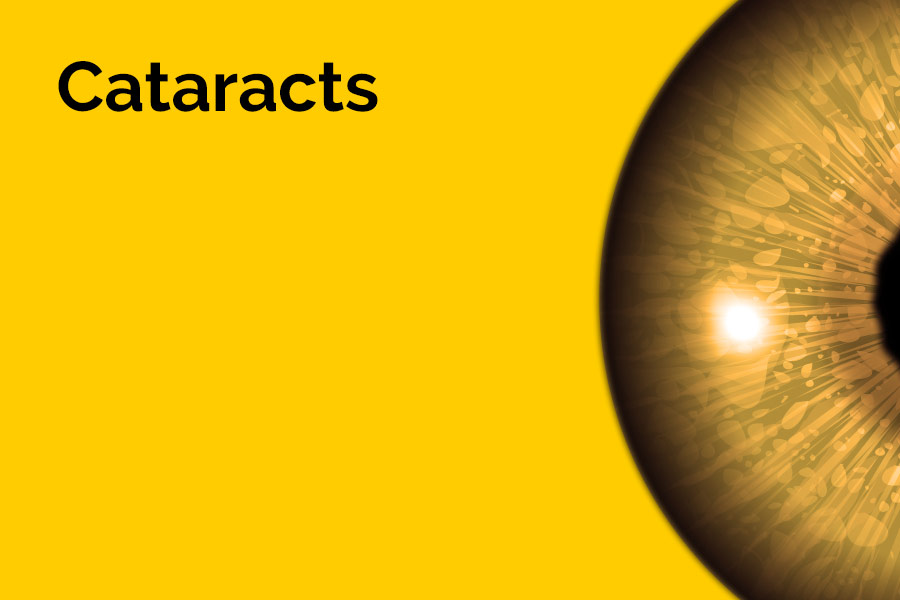Cataracts
Cataracts appear when the clear lens inside of the eye becomes misty or cloudy. Cataracts are painless and block light entering the eye making it difficult to see clearly. In the UK, around half of the over 65 population will be affected by cataracts however they can also sometimes affect children too.
Cataracts can affect one or both eyes and do not necessarily affect your sight in the early stages.
Symptoms
As cataracts develop over several years, sight issues may take some time to appear. Cataracts often develop in both eyes however each eye can be affected differently.
Cataracts will lead to blurred and misty vision as if you are looking out of a cloudy pane of glass or you may have small spots or patches where your vision is less clear.
The glare from bright lights or sunlight may be uncomfortable to look at. Colours may also become faded and objects may appear with a yellow or brown tinge.
Cataracts may also lead to double vision and sufferers may see a halo around bright lights.
Diagnosis, Screening and Tests
In order to determine if you have a cataract, your doctor will review your medical history, check your symptom’s and then perform an eye examination. Several tests may be conducted including:
- Visual acuity test: This test uses an eye chart to measure how well you can read a series of letters. This test allows your eye doctor to determine if you have 20/20 vision or if your vision is showing signs of deteriorating.
- Slit-lamp examination: A slit lamp allows your eye doctor to see the structures at the front of your eye under magnification. This special microscope uses an intense slit of light to illuminate the cornea, lens, iris and the space between your lens and cornea.
- Retinal examination: Before a retinal examination your eye doctor will administer drops in your eyes causing your pupils to dilate. Using a slit lamp or a special device called an ophthalmoscope, your eye doctor can examine your lens for any signs of a cataract.
Treatments
The only effective treatment for cataracts is surgery which is usually offered on the NHS if your cataracts are affecting your ability to carry out everyday activities such as driving, reading and watching television. Cataract surgery involves removing the cloudy lens and replacing it with an artificial lens.
Traditionally those with cataracts were encouraged to wait until they could hardly see before receiving treatment. These days surgery to remove a cataract can be carried out at an early stage before your sight begins to deteriorate.
If you choose to have surgery you will be referred to a specialist to carry out the procedure. If you have cataracts present in both eyes, the surgery will need to be performed on each eye at separate times (generally four weeks apart).
Cataracts removal is one of the most common operations performed in the United Kingdom. It is also one of the safest and most effective types of surgery.
There are no medications, eye drops or other supplements that have been proven to improve cataracts or stop them from affecting your eyesight.
Prevention
Despite cataracts being the most common cause of sight loss for the over 40s, there are some steps that can be taken to stop cataracts or slow their development.
Even if you believe that you have good sight, always make it a priority to regularly see your eye doctor. Early detection of cataracts along with other eye conditions may be enough to save your sight.
Always protect your eyes from the sun by wearing sunglasses with UVA/UVB protection and brimmed hats.
Maintaining a healthy diet is not only critical for improving your overall health but also the health of your vision. Also always stick to the recommended limits when drinking alcohol.
Research has shown that cataracts in smokers are more common than cataracts in non-smokers. If you would like help to quit smoking please contact the NHS stop smoking service.
